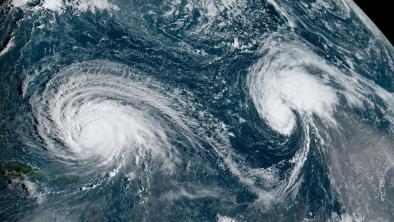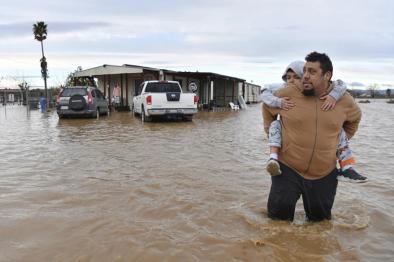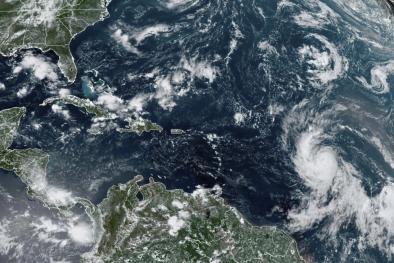Observed increases in North Atlantic tropical cyclone peak intensification rates
Study key findings & significance
- With warmer oceans serving as fuel, Atlantic hurricanes are now more than twice as likely as before to rapidly intensify from minor to major hurricanes.
- The study looked at 830 Atlantic tropical cyclones since 1971. It found that in the last 20 years, 8.1% of the time storms powered from a Category 1 minor storm to a major hurricane in just 24 hours. That happened only 3.2% of the time from 1971 to 1990.
Author quotes
“The rates at which hurricanes strengthen — and the frequency with which they transition from relatively weak storms into major hurricanes — has significantly increased in just the last 50 years, over the same time when we see substantial increases to ocean surface temperatures due to human-caused warming."
“One of the main reasons these findings matter is that, when storms intensify quickly, they can become more difficult to forecast and to plan for, in terms of emergency action plans for coastal residents. We also know that many of the strongest, most damaging hurricanes do intensify particularly quickly at some point in their lifetime,” Garner explained. “My work shows that we are already seeing overall increases to the fastest rates at which Atlantic hurricanes intensify, which means that we are likely already seeing an increased risk of hazards for our coastal communities, including, and perhaps especially, those in North Carolina, given that results showed an increased likelihood for hurricanes to intensify most quickly near the U.S. Atlantic Coast. This means that it will be especially important for our coastal communities to work towards enhanced coastal resiliency measures and emergency action plans that may be able to adapt to hurricanes that strengthen more quickly.”
Andra Garner, author and assistant professor in the Department of Environmental Science at Rowan University in New Jersey
Abstract
Quickly intensifying tropical cyclones (TCs) are exceptionally hazardous for Atlantic coastlines. An analysis of observed maximum changes in wind speed for Atlantic TCs from 1971 to 2020 indicates that TC intensification rates have already changed as anthropogenic greenhouse gas emissions have warmed the planet and oceans. Mean maximum TC intensification rates are up to 28.7% greater in a modern era (2001–2020) compared to a historical era (1971–1990). In the modern era, it is about as likely for TCs to intensify by at least 50 kts in 24 h, and more likely for TCs to intensify by at least 20 kts within 24 h than it was for TCs to intensify by these amounts in 36 h in the historical era. Finally, the number of TCs that intensify from a Category 1 hurricane (or weaker) into a major hurricane within 36 h has more than doubled in the modern era relative to the historical era. Significance tests suggest that it would have been statistically impossible to observe the number of TCs that intensified in this way during the modern era if rates of intensification had not changed from the historical era.
Related Content






